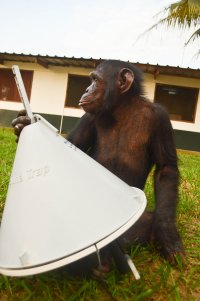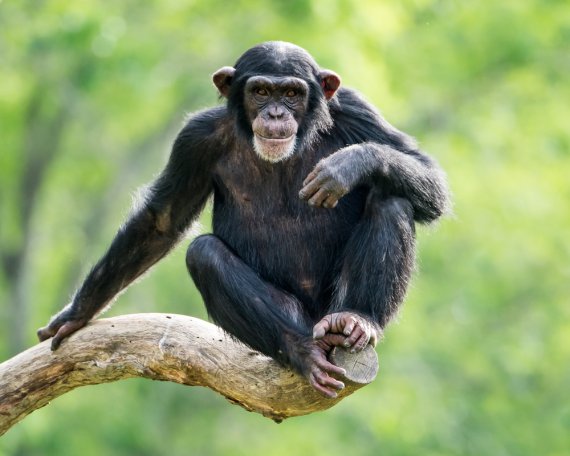Photo: Shutterstock
‘Many human diseases originate in primates,’ explains PhD candidate Bakker of the Laboratory of Entomology. ‘If we want to eradicate malaria one day, it is important to know which mosquito species can transmit malaria between humans and apes.’

A chimpanzee investigates a mosquito trap used in PhD candidate Julian Bakker’s study.
Bakker and his colleagues placed mosquito traps in a rehabilitation centre for chimpanzees in the Democratic Republic of the Congo. These traps released CO2 and contained the odour of chimpanzees, humans or cows. Then the scientists looked at which mosquitoes they had caught. They also used DNA examinations to see whether the mosquitoes had malaria parasites.
The traps mainly contained mosquitoes of the genus Anopheles, which can transmit malaria parasites to humans. These mosquitoes did not have a particular preference for the odour of apes, humans or cows. ‘That means this species of mosquito could form a bridge transmitting malaria from apes to people,’ says Bakker.
Only a small percentage of the Anopheles mosquitoes, about 0.5 per cent, actually carried malaria parasites, but not the type that makes apes or humans sick. ‘Blood tests showed that a small proportion of the apes had human malaria parasites,’ says Bakker. ‘That suggests there are mosquito species in this area that transmit malaria from humans to apes. But we can’t say on the basis of this study which mosquito species these are or how big a risk there is in practice of malaria spreading between apes and humans.’

